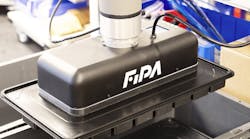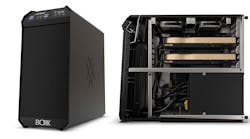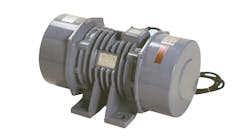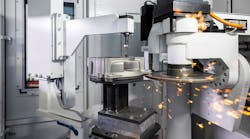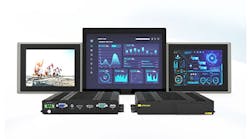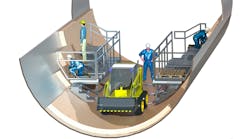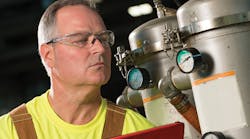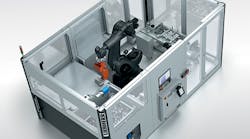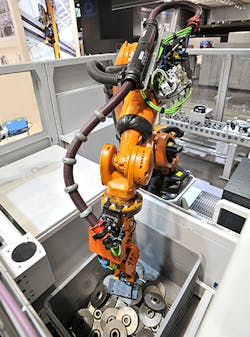LIEBHERR AUTOMATION is offering a new vision system based on the triangulation method that will improve bin picking by ensuring greater accuracy, better component recognition, and faster handling. “Smart” removal of workpieces from a random arrangement, so-called “bin picking”, is a classic automation application: It provides higher productivity, less burden on human resources and lower unit labor costs.
Liebherr-Verzahntechnik GmbH, as a turnkey provider, develops robotized workcells for production lines, and the new solution was developed and refined according to Liebherr specifications jointly with a collaborative partner specializing in sensors. The system is designed to pick components from transport bins up to a meter deep.
“We now apply a two-stage triangulation system, where bins containing components are scanned via a process of laser/camera interaction,” resulting in significantly improved resolution, according to Thomas Mattern.
“While the previous image recognition system, based on the laser run-time method, was stretched to its limits at 3-5 millimeters accuracy, this new system enables us to achieve ten times the resolution,” he noted. “This also improves recognition of the mini features required for positional identification and component differentiation purposes.”
Shadowing and collision risk also are reduced. This allows eight-axis robot arms to pick components, even from transport bins up to a meter deep, such as wire mesh bins or steel bins.
The new image recognition system features a blue laser instead of the earlier red laser. This captures reflective components more reliably and recognizes organic or semi-transparent materials, as well as metal components. This also makes applications outside the metalworking industry a feasible option.
The two-stage triangulation system captures bin content with just one linear movement, without the 3D vison system having to be positioned beforehand. “Recognition and analysis now take up just five seconds. This promotes shorter cycle times for the entire system,” Mattern explained. This higher resolution means that data cloud surfaces are smooth and practically noise-free. The resultant high-quality readings are transmitted to the bin picking system’s main software for further processing. This has also been updated and now features a user-friendly graphical user interface.

